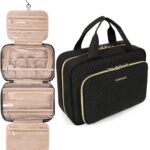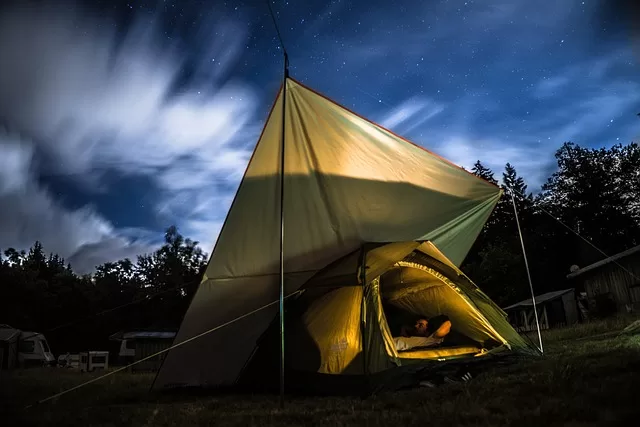You can never match the thrills of camping and exploring all the exciting things to do while camping with anything else. Experiencing the bubbles and serenity of being surrounded by nature and far disconnected from the bustle and demands of the city and your daily life is something everyone should look forward to experiencing as often as possible. However, broken or malfunctioning gear in the great outdoors or discovering too late that your camping gear and equipment need some repairs is enough to put a damper on your spirits and camping experience.
You need to be armed with some creative camping gear repair and maintenance hacks to stand tall through unexpected tears while camping or make sure your camping gear is in great shape before the trip. These skills are basic essential skills every camping enthusiast must have to avoid any disaster and ensure an enjoyable camping experience. Know that taking care of your camping gear and equipment will not only sustain and extend their lifespan but will even go as far as saving you some money. Whether you are a beginner or a camping pro, this guide contains all the tips for your camping gear repairs and maintenance and pointers to why you need to take care of your camping items.
Basic Camping Gear Repair Tools
You should know that your gear can wear out or break during a camping trip, and this is enough reason to have a basic set of camping gear repair tools. These tools must always be with you on every camping trip and included in your camping emergency kit. Here are some essential basic camping gear repair tools:
Multi-Tool
A multi-tool is a compact device that includes a variety of tools, such as pliers, scissors, a knife, and a saw. It’s an excellent tool to have on hand for a variety of camping gear repair needs.
Duct Tape
Duct tape is a versatile adhesive that can be used to patch holes in tents, sleeping bags, or clothing. It’s a lightweight and compact item that should be in every camper’s repair kit.
Seam Sealer
Seam sealer is a waterproof adhesive that can be used to repair seams in tents or rain gear. It’s an essential item to have if you’re camping in wet conditions.
Nylon Thread and Needle
A needle and thread can be used to repair tears in clothing or gear. Nylon thread is an excellent choice since it’s strong and durable.
Spare Parts
Depending on the gear you’re using, it’s a good idea to carry spare parts, such as tent poles or a stove repair kit.
Knife
A sharp knife can be used for a variety of camping gear repair needs, such as cutting rope or trimming tent stakes.
Pliers
Pliers can be used to tighten bolts, loosen stubborn knots, or bend wires.
Scissors
Scissors are useful for cutting fabric or trimming excess material from gear.
Headlamp
A headlamp is an essential tool for nighttime repairs, allowing you to see what you’re doing hands-free.
Repairing Your Camping Gear
Repairing your camping gear is an essential part of ensuring that your gear is in good working order and ready for your next outdoor adventure. Whether it’s patching up a hole in your tent or replacing a broken backpack buckle, knowing how to repair your camping gear can save you time and money in the long run. With the right tools and some basic know-how, you can easily tackle common camping gear repairs and keep your gear in top condition.
Familiarize yourself with the tools
Before heading out on a camping trip, take some time to learn how to use each tool in your repair kit.
Practice Repairs at Home
Practicing repairs at home can help you feel more confident when making repairs in the field.
Take Your Time
When making repairs, take your time and work carefully to avoid making the problem worse.
Common Camping Gear Repair Issues
Camping gear can take a beating during outdoor adventures, and it’s essential to know how to address common repair issues to keep your gear in top condition. Here are some comprehensive notes on common camping gear repair issues:
Tent Repair
- Rips and holes: Rips and holes in tent fabric can be repaired with a patch or tape. First, clean the area around the rip or hole and allow it to dry completely. Apply a patch or tape, following the instructions carefully.
- Leaking seams: Seams on a tent can sometimes leak due to wear and tear or improper setup. Use a seam sealer to repair the leak. Clean the area around the seam, apply the sealer, and allow it to dry completely before using the tent.
- Broken poles: Broken tent poles can be repaired temporarily with duct tape or permanently with a tent pole repair sleeve. If using duct tape, wrap it tightly around the broken area of the pole. For a permanent repair, slide the repair sleeve over the broken section of the pole and secure it with tape.
Sleeping Bag Repair
- Tears and holes: Small tears or holes in a sleeping bag can be repaired with a patch or tape. Clean the area around the tear or hole and allow it to dry completely. Apply a patch or tape, following the instructions carefully.
- Broken zippers: Zippers on a sleeping bag can become stuck or break. Use pliers to try to release the zipper or replace the zipper entirely.
- Worn-out insulation: Over time, the insulation in a sleeping bag can become compressed and lose its insulating properties. Unfortunately, this is a difficult issue to repair, and it may be time to invest in a new sleeping bag.
Backpack Repair
- Rips and holes: Rips and holes in a backpack can be repaired with a patch or tape. Clean the area around the rip or hole and allow it to dry completely. Apply a patch or tape, following the instructions carefully.
- Damaged buckles: Buckles on a backpack can become damaged or broken. Replace the buckle by removing the damaged one and sewing a new one in its place.
- Broken zippers: Zippers on a backpack can become stuck or break. Use pliers to try to release the zipper or replace the zipper entirely.
camping Gear Maintenance
Proper maintenance of camping gear is essential to extend its lifespan and ensure it performs as expected.:
Tent Maintenance
- Cleaning: To keep your camping tent and shelter in good condition, clean it regularly using mild soap and water. Avoid using harsh chemicals or bleach as this can damage the tent’s fabric.
- Waterproofing: Over time, the waterproof coating on a tent’s fabric can wear off. To restore waterproofing, use a waterproofing spray or coating specifically designed for tents.
- Storage: Proper storage is important to prevent mildew and mold growth. Store your tent in a dry, cool place, preferably in a storage bag specifically designed for tents.
Sleeping Bag Maintenance
- Cleaning: To clean your camping sleeping bag, use mild detergent and cold water. Avoid using hot water or bleach as this can damage the insulation. After washing, hang the sleeping bag to dry, avoiding direct sunlight.
- Storage: Store your sleeping bag in a dry, cool place, preferably in a storage bag specifically designed for sleeping bags. Avoid compressing the insulation for extended periods, as this can damage it.
- Insulation care: To maintain the insulation in your sleeping bag, fluff it up regularly by shaking it out and storing it loosely. Avoid storing the sleeping bag in a compressed state for extended periods, as this can damage the insulation.
Backpack Maintenance
- Cleaning: To clean your camping backpack and bag, use mild detergent and cold water. Avoid using hot water or bleach as this can damage the fabric. After washing, hang the backpack to dry, avoiding direct sunlight.
- Storage: Store your backpack in a dry, cool place, preferably in a storage bag specifically designed for backpacks. Avoid compressing the backpack for extended periods, as this can damage the fabric and structure.
- Buckle and zipper maintenance: Inspect the buckles and zippers on your backpack regularly and replace any damaged or worn parts. Lubricate the zippers with a zipper lubricant to keep them running smoothly.
DIY Camping Gear Repair
If you’re camping and experiencing gear issues, it’s important to know how to make basic emergency DIY repairs to your equipment. This means knowing how to handle repairs alone without help or taking it to a pro. Knowing how to make basic repairs to your camping gear can save you money and ensure that you’re able to enjoy your camping trip without any gear-related issues. By following these DIY repair tips, you can fix common gear problems and get back to your adventure. However, if you’re unsure about how to make a repair or if the damage is extensive, it’s always best to seek professional help.
DIY Tent Repair Tips
- Patching rips and holes: To patch a rip or hole in your tent, use a tent repair kit that includes patches and adhesive. Clean the damaged area thoroughly and apply the adhesive and patch according to the kit’s instructions.
- Seam sealing: If your tent’s seams are leaking, you can seal them using a seam sealer. Apply the sealer along the seams using a brush or roller, and allow it to dry completely before using the tent.
- Pole repair: If a tent pole breaks, you can use a splint or duct tape to temporarily repair it. To replace a broken pole, order a replacement pole section from the manufacturer or a camping gear supplier.
DIY Sleeping Bag Repair
- Patching tears and holes: To patch a tear or hole in your sleeping bag, use a sleeping bag repair kit that includes patches and adhesive. Clean the damaged area thoroughly and apply the adhesive and patch according to the kit’s instructions.
- Zipper repair: If the zipper on your sleeping bag breaks, you can use pliers to fix the slider or replace it entirely. Order a replacement slider or zipper from the manufacturer or a camping gear supplier.
- Insulation repair: If the insulation in your sleeping bag is damaged, you can use a sleeping bag repair kit to patch it. Alternatively, you can add extra insulation by stuffing the sleeping bag with clothing or a blanket.
DIY Tips for Backpack Repair
- Patching rips and holes: To patch a rip or hole in your backpack, use a repair kit that includes patches and adhesive. Clean the damaged area thoroughly and apply the adhesive and patch according to the kit’s instructions.
- Buckle replacement: If a buckle on your backpack breaks, you can replace it with a new buckle from the manufacturer or a camping gear supplier. Use a seam ripper to remove the old buckle and sew the new one in its place.
- Zipper repair: If the zipper on your backpack breaks, you can use pliers to fix the slider or replace it entirely. Order a replacement slider or zipper from the manufacturer or a camping gear supplier
Professional Repair Tips
If you’re experiencing camping gear issues that are beyond your DIY repair skills or if you’re unsure about how to make a repair, it’s important to seek professional help. Here are some detailed notes on when to seek professional help for your camping gear repair needs:
Types of Camping Gear Repair Issues that Require Professional Help
- Structural Damage: If your tent or backpack has severe structural damage, such as a large tear or hole, it may require professional repair. Attempting to repair the damage yourself may lead to further damage or compromise the safety and stability of the gear.
- Technical Repairs: Some camping gear, such as stoves or water filtration systems, may require technical repairs that are beyond the scope of DIY repairs. Seeking professional help for these types of repairs is essential to ensure that the gear functions properly and safely.
- Manufacturer Defects: If your camping gear is still under warranty and you’ve experienced a manufacturer defect, it’s best to seek professional help from the manufacturer or an authorized repair service to avoid voiding the warranty.
Choosing a Camping Gear Repair Service
When choosing a camping gear repair service, it’s important to consider the following factors:
- Reputation: Look for reviews and recommendations from other campers to find a reputable repair service with a track record of quality repairs.
- Experience: Choose a repair service with experience repairing your specific type of camping gear to ensure that they have the necessary skills and knowledge to make the repair.
- Location: Choose a repair service that’s located near your camping destination to avoid additional travel expenses.
- Turnaround Time: Ask about the repair service’s turnaround time to ensure that you’ll have your gear back in time for your camping trip.
Cost of Camping Gear Repair
The cost of camping gear repair varies depending on the type and extent of the damage. Some repair services may offer a flat rate for common repairs, while others may charge by the hour or by the extent of the damage. When seeking professional help, it’s important to get a quote for the repair upfront to ensure that it fits within your budget.
Frequently Asked Questions
What are the Benefits of Camping Gear Repair and Maintenance?
Camping gear repair and maintenance can help extend the lifespan of your gear, save you money by avoiding the need to buy new gear, and ensure that your gear functions properly and safely on your camping trips.
What is The Common Camping Gear Repair Issues?
Common camping gear repair issues include rips and holes in tents or sleeping bags, leaking tent seams, broken tent poles or backpack buckles, and worn-out insulation in sleeping bags.
What Are the Must-Have Camping Gear Repair Tools?
Must-have camping gear repair tools include duct tape, seam sealer, patch kits, replacement tent poles, a sewing kit, and a multi-tool.
When Should I Seek Professional Help for Camping Gear Repair?
You should seek professional help for camping gear repair if you’re unsure about how to make a repair, if the damage is beyond your DIY repair skills, if your gear has severe structural damage, or if your gear requires technical repairs.
How can I Choose a Camping Gear Repair Service?
When choosing a camping gear repair service, consider factors such as reputation, experience, location, and cost. Look for reviews and recommendations, choose a service with experience repairing your specific type of gear, and get a quote for the repair upfront.
How Can I Maintain My Camping Gear?
To maintain your camping gear, regularly clean and waterproof your tent, store your sleeping bag properly, and clean and maintain your backpack buckles and zippers. Follow manufacturer instructions for proper care and maintenance of your gear.
Conclusion
Camping gear repair and maintenance are essential for ensuring that your gear lasts for many camping trips to come. Regular maintenance can help you avoid costly repairs and replacements, while timely repairs can prevent small issues from becoming larger and more expensive. Whether you’re DIY-ing your repairs or seeking professional help, it’s important to stay on top of your camping gear maintenance to keep your gear in good working order.
As a final tip, make sure to follow manufacturer instructions for proper care and maintenance of your gear, and always store your gear in a dry and cool place when not in use. With these tips and a little bit of effort, you can enjoy the great outdoors with reliable and functional camping gear. So, don’t hesitate to practice camping gear repair and maintenance, and happy camping!



























